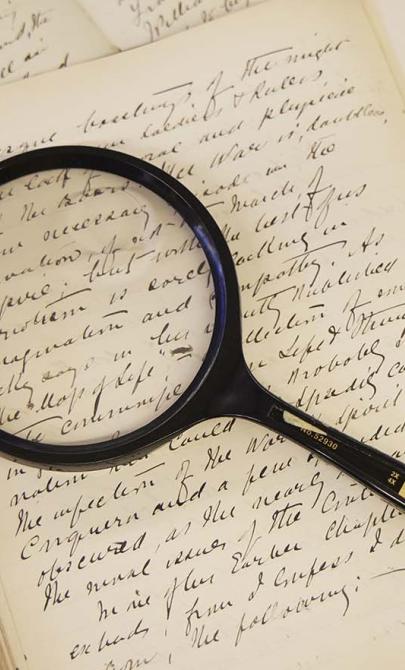Russian Socialist Collection
Key items in the collection
Highlights from this collection demonstrate its historical significance and variety.
The Hoover Institution at Stanford University has one of the largest collections on Russia and the Soviet Union, starting in 1919 and expanding with the Boris Nicolaevsky Collection in 1963. It includes the Menshevik Collection on microfilm, featuring 241 newspapers and periodicals (1898-1922), along with books and pamphlets by authors like V Akimov, P.A. Krasikov, and Iulii Martov.
Harvard’s Houghton Library holds a significant collection of Russian revolutionary literature, with books, pamphlets (1858-1916), broadsides (1898-1918), periodicals (1862-1916), and Tsarist publications (1826-1916). Key authors in the collection include Lenin, Trotsky, Plekhanov, Bakunin, Herzen, and Kropotkin, as well as Russian translations of works by German and French socialists.
In 1958, a collection of 318 Russian pamphlets was purchased from Kraus, covering works published between 1870 and 1951, primarily between 1900 and 1925. Many of these pamphlets were written by Russian exiles and published in cities like Geneva, London, Paris, and Berlin. The collection showcases various strands of Russian socialism, including Bolshevik, Menshevik, and Socialist Revolutionary viewpoints. Notable authors include Paul Axelrod, Nikolai Bukharin, Viktor Chernov, Fedor Dan, Petr Kropotkin, Leon Trotsky, and Grigorii Zinoviev. It also includes official publications from the Social Democratic and Socialist Revolutionary Parties.
Additionally, the collection features Russian translations of works by German, French, and Belgian socialists like August Bebel, Eduard Bernstein, and Karl Kautsky.
Max Zwalf, a Dutch socialist, assembled another collection of about 100 Russian pamphlets published between 1909 and 1946, featuring authors like Mikhail Artsybashev, Nikolai Bukharin, Anatoli Kamenskii, and Vladimir Lenin. There are also pamphlets in French, German, and English discussing Russian communism and the Soviet Union.
In 1975, Kraus Reprint produced a series titled The Russian Revolution: From the October Revolution to the Moscow Trials, 1917-1936, including works by leading Bolsheviks and critics of the Communist regime.
The Library holds the collected works of key Russian socialists, including:
- Vladimir Ilich Lenin, Collected works, 45 vols, 1960-72
- Vladimir Ilich Lenin, Polnoe sobranis sochinenii, 55 vols, 1967-70
- Georgii Plekhanov, Sochineniia, 24 vols, 1923-27
- Leon Trotsky, Sochineniia, 21 vols, 1925-27 [Library holds 12 volumes]
- Leon Trotsky, Writings of Leon Trotsky, 12 vols, 1970-79
About the Russian socialist movement
Emergence of the Russian Populist Movement
The Russian populist movement, inspired by the writings of Alexander Herzen, emerged after the emancipation of the serfs in 1861. The populists believed that the peasant commune represented the foundation for a future socialist society and argued that Russia should follow its own path, avoiding the capitalist system. In 1876, they formed Russia's first revolutionary party, Zemlia i Volia (Land and Liberty), which called for the redistribution of land to peasants, self-determination for the various parts of the Russian empire, self-government for the communes, and the overthrow of the Tsar. The assassination of Tsar Alexander II in 1881 led to a reactionary crackdown, which caused the populist movement to disintegrate. In 1901, a faction of populists formed the Socialist Revolutionaries, advocating for the distribution of all land to the peasants.
Rise of Marxism
In 1883, Georgii Plekhanov, a former populist living in exile in Geneva, formed the first Russian theoretical Marxist group. The Marxists believed that social change would ultimately occur through the evolution of capitalism, leading Russia through bourgeois democracy to a socialist revolution. The All-Russian Social Democratic Party held its first congress in Minsk in 1898, presenting a democratic platform that argued the proletariat was the only “liberator class.” The party split in 1903, mainly over the question of an immediate socialist revolution and organisational structure. The Bolsheviks, led by Vladimir Lenin, advocated for a small, tightly controlled party of professional revolutionaries ready for insurrection. The Mensheviks, led by Iulii Martov and others, favoured a broader, more inclusive party modelled on the German Social Democratic Party, which would be closely linked to trade unions and other workers’ organisations.
Struggles, Exile, and World War I
After the 1905 Russian revolution, there was a significant decline in party membership, and attempts at reunification were unsuccessful. Many Social Democratic leaders, including Lenin, Georgii Zinoviev, Martov, Fedor Dan, Pavel Axelrod, Leon Trotsky, and Plekhanov, lived in exile from 1907, struggling to maintain contact with members in Russia. Much of their time was spent writing letters, pamphlets, reports, and a wide range of newspapers. World War I exacerbated divisions and enmities, often crossing political lines.
1917 Revolution and Bolshevik Takeover
After the Tsar’s overthrow in March 1917, the socialist leaders returned to Russia. The Socialist Revolutionaries and Mensheviks dominated the soviets and held several positions in the Provisional Government, with Alexander Kerensky serving as Premier from July to November 1917. The Bolsheviks, determined to overthrow the government, carried out a coup in November 1917. Despite the strong presence of Socialist Revolutionaries and Mensheviks in the soviets and their majority in the elections for the Constituent Assembly in 1918, the Bolsheviks dispersed the Assembly and accused their rivals of being counter-revolutionaries. This marked the beginning of the Communist Party's long hegemony in the Soviet Union.
In the early 1920s, Menshevik leaders like Martov and Dan went into exile again, and show trials were initiated against the former revolutionaries. The rise of the Bolsheviks and the Communist Party marked the end of the Socialist Revolutionaries and Mensheviks' influence in Russian politics.
Background to the collection
The microfilm of Menshevik publications was purchased from the Hoover Institution on War, Revolution and Peace at Stanford University in 1967. The microfilm of the Houghton Library collection of Russian revolutionary literature was bought from Research Publications of New Haven, Connecticut, in 1973.
The collection of Russian socialist pamphlets was acquired from the New York bookseller, H.P. Kraus, in 1958. The Zwalf Collection was purchased in 1961 from the London bookseller Ben Weinreb.
The Menshevik Collection is held in the Newspaper and Microform Collection. There are 72 reels. The items have not been catalogued, but they are listed in a publication issued by the Hoover Institution.
The Houghton Library Collection is also held in the Newspaper and Microform Collection. There are 47 reels. The items have not been catalogued, but the collection is described in a detailed guide compiled by Kenneth E. Carpenter and published by the Houghton Library.
The collection of Russian pamphlets acquired from H.P. Kraus are housed in 29 boxes and held at the Hume Annexe at Sf 335 RUS. They do not have entries in the on-line catalogue, but a 45-page catalogue was published by the Library in 1963 and is held at 016.335 AUS. Similarly, the Zwalf Collection is housed in 55 boxes and held at the Hume Annexe at 335 ZWA. A printed catalogue is held at Nq 016.335 AUS. The pamphlets reproduced by Kraus Reprint are held at S41 940.3 SEE (10 vols).
This guide was prepared using these references:
- Anna Bourguina and Michael Jakobson, compilers. Guide to the Boris I. Nicolaevsky Collection in the Hoover Institution archives, Stanford, Hoover Institution, 1989
- [Hoover Institution of War, Revolution and Peace] Menshevik collection of newspapers, periodicals, pamphlets and books related to the Menshevik movement, n.d.
- Houghton Library, Russian revolutionary literature collection: a descriptive guide and key to the collection, compiled by Kenneth E. Carpenter, New Haven, Conn., Research Publications, 1976
- J.H.L. Keep, The rise of social democracy in Russia, Oxford, Clarendon Press, 1963
- Russian socialist pamphlet collection: catalogue of a collection mainly of pamphlets on socialism and related subjects, Canberra, National Library of Australia, 1963
- Leonard Schapiro, The Communist Party of the Soviet Union, London, Eyre & Spottiswoode, 1960
- F. Venturi, Roots of revolution: a history of populist and socialist movements in nineteenth century Russia, translated by F. Haskell, London, Weidenfeld and Nicolson, 1960




